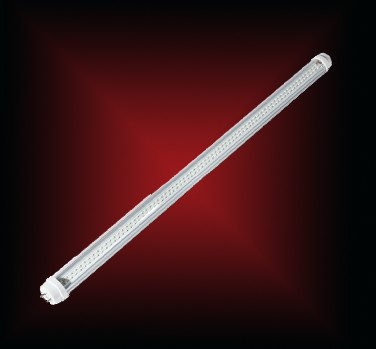 The Ministry of Finance recently issued the "Circular on Adjusting and Promulgating the 13th Issue of Government Procurement List for Energy-saving Products," and LED products entered the market first. On the one hand, the demand for energy conservation and emission reduction will accelerate the promotion of LED lamps and lanterns in 2013; on the other hand, problems such as supply and demand imbalances, and technologies that urgently need to get rid of “import dependence†remain in front of the industry. Whether or not the benefits will show up immediately remains to be seen. .
The Ministry of Finance recently issued the "Circular on Adjusting and Promulgating the 13th Issue of Government Procurement List for Energy-saving Products," and LED products entered the market first. On the one hand, the demand for energy conservation and emission reduction will accelerate the promotion of LED lamps and lanterns in 2013; on the other hand, problems such as supply and demand imbalances, and technologies that urgently need to get rid of “import dependence†remain in front of the industry. Whether or not the benefits will show up immediately remains to be seen. . In the international market, the European Union’s suspension of sales of incandescent bulbs on January 1, 2013 will boost domestic LED OEM orders. From the perspective of LED development plans in various countries, the United States, the European Union, South Korea, Japan, and China have proposed time charts of LED lighting product substitution rates, of which South Korea and Japan are particularly active. South Korea proposes that the LED replacement rate for government office lighting in 2012 is 30. % In 2015, LED lighting products will enter the 30% general lighting market; Japan proposes that the replacement rate of LED lighting in 2015 will be 50%, LED lighting products will replace 100% in 2020, and LED lighting will use 100% in 2030.
Zhou Jun said that with the diversification of lighting products, prices further decline, the European Union has completely banned incandescent lamps, Japan's electricity consumption is tight. In 2013, LED lighting products in high-developed countries in developed countries will likely accelerate penetration and benefit domestic lighting exporters.
Short-term risks still exist but some in the industry believe that there is still some risk in the LED industry in the short term. First of all, the supply and demand of the LED industry is imbalanced or lasts for a long time. Second, the application of LED lighting may not be suddenly accelerated due to favorable policies, and may even start at or below expectations. Third, domestic companies still need to make breakthroughs in their core technologies and core processes.
At present, the market price of LED lamps is several times that of traditional light sources, and high prices have become an obstacle to the popularization of LED. Whether LED lamps can be replaced by incandescent lamps depends on whether LED cost can be lowered or whether market prices can be lowered.
Research Institute SEMI China LED industry analyst Qi Faxin told reporters that from the timing, the current LED industry is still a young industry, which is in the process of development; and today's LED manufacturing industry is still in a manufacturing inefficiency, small-scale enterprise, distributed scattered period An efficient manufacturing model has not yet been formed. Inefficiency means high costs.
Zhou Jun believes that the new production capacity of LED upstream epitaxial chips will slow down in 2013. At present, new supply is mainly due to the production of purchased equipment, improved equipment utilization rate, improved product yield, and fewer new equipment purchases. The relationship between supply and demand is expected to be further eased; due to the continued release of investment capacity in downstream packaging applications, supply and demand are not optimistic, and downward pressure on prices remains high.
Liu Liang believes that the overall oversupply status of the LED industry will not change in the short term. Therefore, it will be a trend for the industry to control production capacity through alliances and mergers. Each LED manufacturer will seek new applications and strategic alliances to ensure orders and profits. space.
Solar cables are available for indoor and outdoor use for flexible and fixed installations with high mechanical strength in extreme weather conditions.
The cables are designed to withstand the harsh environmental conditions that occur in any fixed, mobile, rooftop or building integrated PV installation.
Applications
Solar energy is used to generate photovoltaic (PV) power by capturing sunlight. The energy is used for solar heating and, thanks to energy conversion, it can also be used to generate electricity. As a result, the demand for solar cables is also increasing. Solar cables are interconnecting cables used in photovoltaic power generation. Solar cables interconnect the solar panels and other electrical components of the PV system. Solar cables are designed to be UV-resistant and weatherproof.
Cable construction
Conductor: fine wire tinned copper conductor.Insulation: UV-resistant, cross-linkable, halogen-free, flame-retardant compound for core insulation.
Core marking: red, black or natural Sheath: UV-resistant, cross-linkable, halogen-free, flame-retardant compound for the insulation sheath.
Cable colour: black or red
Advantages
Solar cable modules operate at high temperatures and are exposed to a wide range of environmental conditions.These cables need to meet the sunlight resistance and temperature ratings required by the environment.
Solar cables are manufactured for photovoltaic applications.
Both cable types typically contain XLPE insulation and are resistant to sunlight and/or direct burial.
Solar Cable,Red Tuv Solar Cable,Pvc Copper Electrical Solar Cables,Solar Copper Wire Cable
Ruitian Cable CO.,LTD. , https://www.rtpowercable.com